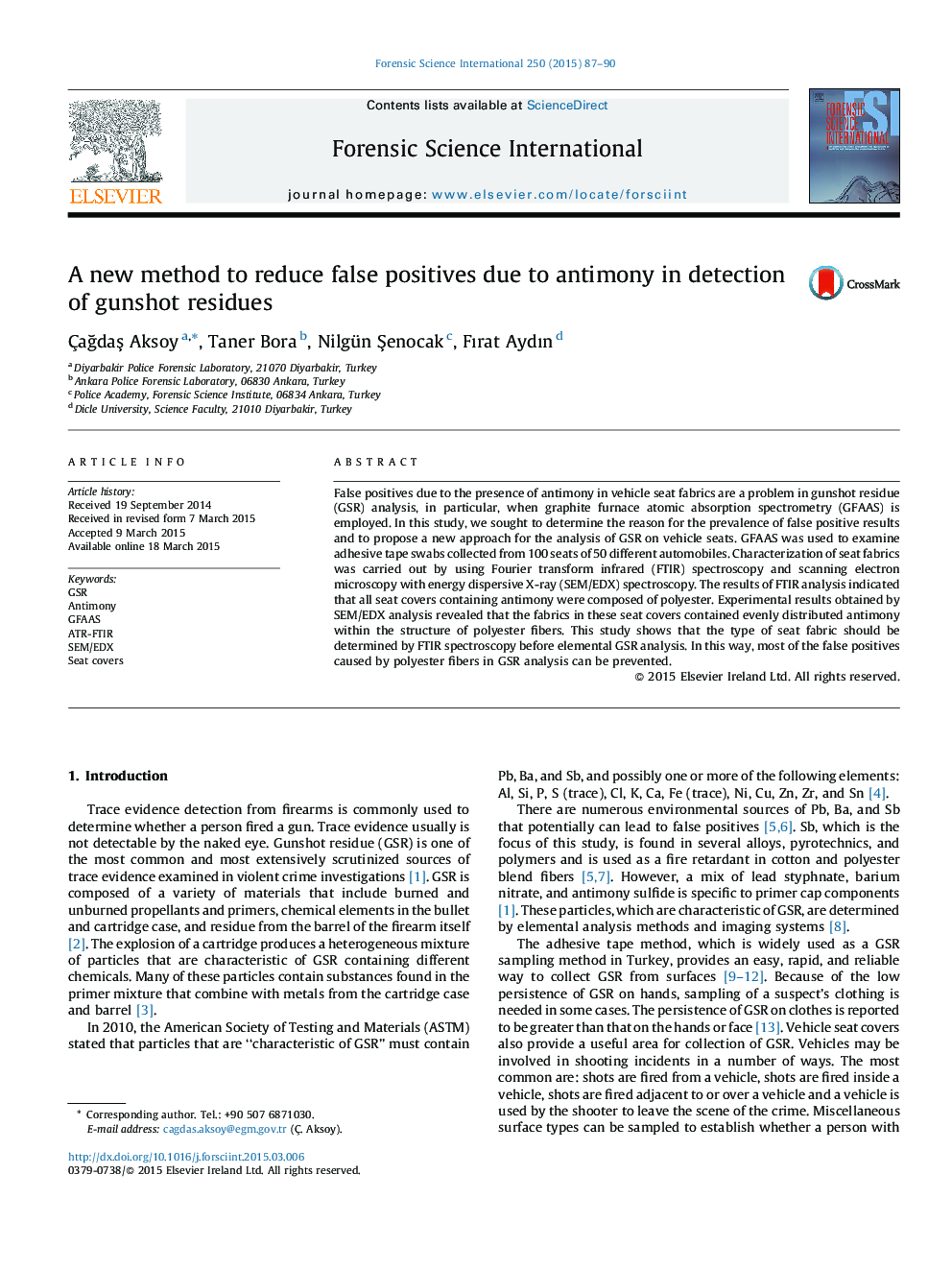| Article ID | Journal | Published Year | Pages | File Type |
|---|---|---|---|---|
| 95295 | Forensic Science International | 2015 | 4 Pages |
•We analyzed seat covers of 50 different vehicles by using GFAAS.•Sb was detected in 23% of all vehicle seats examined.•All seat covers containing Sb were composed of polyester.•Polyester fibers were observed to be the source of Sb in SEM/EDX.
False positives due to the presence of antimony in vehicle seat fabrics are a problem in gunshot residue (GSR) analysis, in particular, when graphite furnace atomic absorption spectrometry (GFAAS) is employed. In this study, we sought to determine the reason for the prevalence of false positive results and to propose a new approach for the analysis of GSR on vehicle seats. GFAAS was used to examine adhesive tape swabs collected from 100 seats of 50 different automobiles. Characterization of seat fabrics was carried out by using Fourier transform infrared (FTIR) spectroscopy and scanning electron microscopy with energy dispersive X-ray (SEM/EDX) spectroscopy. The results of FTIR analysis indicated that all seat covers containing antimony were composed of polyester. Experimental results obtained by SEM/EDX analysis revealed that the fabrics in these seat covers contained evenly distributed antimony within the structure of polyester fibers. This study shows that the type of seat fabric should be determined by FTIR spectroscopy before elemental GSR analysis. In this way, most of the false positives caused by polyester fibers in GSR analysis can be prevented.
Graphical abstractFigure optionsDownload full-size imageDownload high-quality image (167 K)Download as PowerPoint slide
